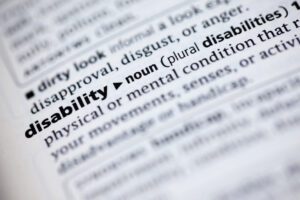
Getting return-to-work accommodations after your disability has led you to filing a claim for long term disability benefits can be incredibly disheartening. After all, you wouldn’t have gone to the trouble of filing the claim if you thought you could just make a few small changes and continue to go to work every day, so for many being told that they can return to work is like sentencing them to 40-plus hours of pain, guilt, and embarrassment every week.
Call or text (800) 562-9830 or complete a Free Case Evaluation form
Don’t give up hope just because your evaluator rated you as able to return to work, though. Instead, take a closer look at what it really says. One potential avenue is to try to show that the information they used to prove your abilities matched the requirements of your job is incorrect. We’ve discussed this previously, and it’s definitely worth looking into. But if that option isn’t available to you, the best thing to do is look closely at the RTW designation. Often when evaluators say that people can return to work, it will be accompanied by a caveat where they explain that you will require certain accommodations to do your job at a reasonable level. If you can show that the accommodations the evaluator is asking for aren’t realistic, the RTW designation may not stand.
Common Return-to-Work Recommendations and Accommodations
For a free legal consultation, call (800) 562-9830
It’s hard to pinpoint what exactly might be deemed unreasonable where accommodations are concerned, but there are a number of typical accommodation requests that are usually considered reasonable. If the evaluator recommends something different or more extreme for you, you might want to talk with an experienced disability lawyer to see if it’s worth fighting.
Sit-stand desk. These desks enable the person using them to sit or stand as they need and continue doing their work. There are a wide variety of manufacturers, models, and styles that employers can choose from.
Ergonomic or alternative keyboards and mice. Traditional keyboards’ hand mice have been shown to contribute to musculoskeletal problems that include carpal tunnel in addition to other potential issues. Alternative devices can be obtained at a reasonable cost and are generally considered a “realistic” accommodation.
Floorpads and seatpads. Standing all day on a hard surface can lead to all kinds of problems, but many of these can be greatly alleviated simply by placing specially designed pads on the floor to act as shock absorbers. The same thing is true for placing seatpads on chairs.
Foot rests. The traditional office chair tends to put undue stress on multiple areas of your body. It’s possible to alleviate some of these issues with ergonomic chairs, but another option is to utilize foot rests that help to displace some of the stress and pressure.
All long term disability insurance policies have their own quirks, which is why we created our free eBook to help you navigate that world. As always, though, the best way to answer a question that relates to your specific situation is to speak with an experienced disability insurance attorney as soon as possible.






